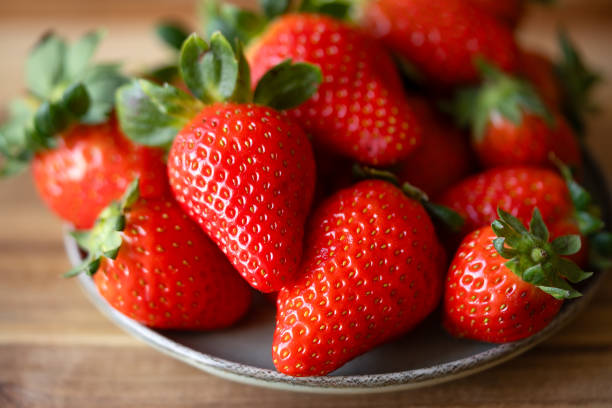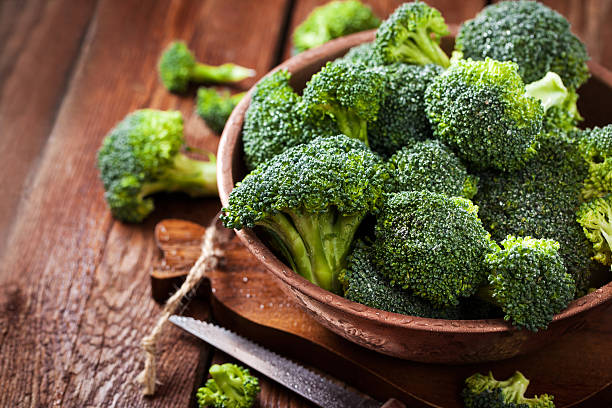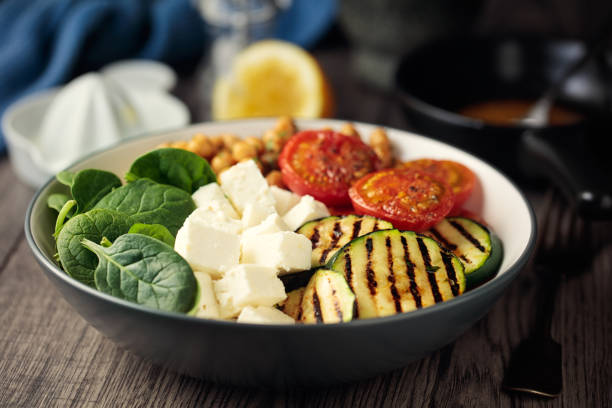Introduction
Eating healthy doesn’t mean you have to give up flavor. Many people think low-calorie foods are bland or boring, but that’s not true. In fact, some of the most delicious foods are naturally low in calories and full of nutrients your body needs. Choosing the right foods can make a big difference in how satisfied you feel while staying on track with your health goals.
In this post, you’ll discover 15 low-calorie foods that actually taste amazing. These foods are not only great for weight loss but also for boosting energy, improving digestion, and keeping cravings under control. You’ll see that healthy eating can be enjoyable, easy, and far from boring. Whether you want quick snacks, light meals, or flavorful ingredients for your favorite recipes, this list will give you plenty of options to enjoy without the guilt.
Why Choose Low-Calorie Foods?
Low-calorie foods are great for weight management because they let you eat more volume without going over your daily calorie needs. Instead of eating small portions that leave you hungry, these foods allow you to enjoy satisfying meals without the extra calories. Many of them are naturally rich in water, fiber, or protein, which keeps you full for longer and helps reduce cravings. By choosing these foods, you can enjoy both flavor and balance in your diet.
Some benefits of adding low-calorie foods to your daily routine include:
- Easier weight loss or maintenance – You can cut calories without feeling deprived.
- Improved digestion – Fiber-rich foods support a healthy gut and regular bowel movements.
- Better energy levels – Nutrient-dense foods give your body steady fuel throughout the day.
- Reduced risk of chronic diseases – A diet high in fruits, vegetables, and lean proteins supports heart health and lowers the chance of diabetes and obesity.
For more science-backed details, check resources from Harvard T.H. Chan School of Public Health.
15 Low-Calorie Foods That Taste Delicious
Here are the top foods that prove healthy eating doesn’t have to be boring.
1. Watermelon
- Calories: ~46 per cup
- Why It’s Great: Watermelon is one of the best low-calorie fruits because it’s refreshing, naturally sweet, and packed with water to keep you hydrated. It also contains vitamins A and C, plus antioxidants like lycopene that support heart health and may reduce inflammation. Since it’s mostly water, it helps fill you up without adding extra calories, making it a smart choice for weight loss or healthy snacking.
- How to Enjoy: Eat chilled slices on a hot day, blend into smoothies for a natural sweetness, or add cubes to a summer salad with mint and feta for a light and flavorful dish.

2. Strawberries
- Calories: ~49 per cup
- Why It’s Great: Strawberries are a delicious low-calorie fruit that’s naturally sweet and bursting with flavor. They are rich in vitamin C, antioxidants, and fiber, which support immune health, improve digestion, and may help reduce inflammation. Their natural sweetness makes them a perfect substitute for high-calorie desserts, while still satisfying your sweet tooth. Plus, strawberries are versatile and can be used in both snacks and meals.
- How to Enjoy: Add fresh strawberries to yogurt or oatmeal for a nutrient boost, blend them into smoothies, or enjoy them on their own as a refreshing snack. You can also slice them over salads or dip them in a little dark chocolate for a guilt-free treat.
3. Cucumbers
- Calories: ~16 per cup
- Why It’s Great: Cucumbers are one of the lowest-calorie vegetables you can eat, making them a perfect snack for weight management. They are made up of more than 90% water, which helps keep you hydrated while also filling you up without adding extra calories. Cucumbers are also a good source of antioxidants and contain small amounts of vitamins and minerals like vitamin K and potassium. Their light, crisp texture makes them both refreshing and satisfying.
- How to Enjoy: Slice cucumbers and dip them in hummus for a crunchy snack, add them to salads for extra freshness, or infuse them in water for a naturally flavored drink. You can also enjoy cucumber slices with a sprinkle of salt and lemon juice for a simple, refreshing treat.
4. Zucchini
- Calories: ~20 per cup
- Why It’s Great: Zucchini is a low-calorie vegetable with a mild flavor that blends well with almost any seasoning or sauce. It’s high in water and fiber, which makes it filling without being heavy. Zucchini also provides important nutrients like vitamin A, vitamin C, and potassium, which support eye health, immunity, and heart function. Because it absorbs flavors so well, zucchini is an excellent ingredient for creating healthy meals that don’t feel bland or restrictive.
- How to Enjoy: Spiralize zucchini into “zoodles” as a low-carb pasta alternative, grill slices for a smoky side dish, or sauté with garlic and olive oil for a quick and tasty option. You can also add shredded zucchini into muffins, soups, or stir-fries to boost nutrition without adding many calories.
5. Grapefruit
- Calories: ~52 per half
- Why It’s Great: Grapefruit is a tangy, refreshing citrus fruit that is naturally low in calories yet high in nutrients. It’s a great source of vitamin C, which supports immune health, and it also provides antioxidants that help fight inflammation. Studies suggest that grapefruit may support weight loss by boosting metabolism and helping control appetite. Its juicy texture makes it both hydrating and satisfying, especially if you’re looking for a healthy way to curb sugar cravings.
- How to Enjoy: Eat grapefruit fresh on its own for a light snack, or add segments to salads for a burst of flavor. You can also blend it into smoothies, use it in fruit bowls, or pair it with a drizzle of honey to balance its tart taste.
6. Celery
- Calories: ~10 per stalk
- Why It’s Great: Celery is one of the lowest-calorie vegetables you can eat, making it a favorite for weight loss and healthy snacking. It’s made up of mostly water, which helps with hydration, and it contains fiber that supports digestion and helps you feel full. Celery also provides antioxidants and small amounts of vitamins A, C, and K. Because of its natural crunch and light flavor, it’s an easy food to enjoy raw or as part of a meal without adding many calories.
- How to Enjoy: Pair celery sticks with peanut butter for a mix of protein and crunch, or spread with low-fat cream cheese for a satisfying snack. You can also chop celery into soups, stir-fries, or salads for extra texture and freshness.
7. Mushrooms
- Calories: ~15 per cup
- Why It’s Great: Mushrooms are a low-calorie food with a savory, meaty texture that makes them a great substitute for high-calorie ingredients. They are rich in antioxidants, B vitamins, and minerals like selenium and copper, which support energy production and a strong immune system. Mushrooms also contain compounds that may help reduce inflammation and improve heart health. Because they absorb flavors easily, they can enhance many dishes without adding extra calories.
- How to Enjoy: Add mushrooms to stir-fries, soups, or pasta dishes for extra flavor and texture. You can also grill or roast them for a smoky taste, or use large portobello mushrooms as a healthy alternative to burger patties.
8. Spinach
- Calories: ~23 per cup (cooked)
- Why It’s Great: Spinach is a nutrient-dense leafy green that delivers a lot of health benefits for very few calories. It’s packed with iron, magnesium, and vitamins A, C, and K, which support strong bones, healthy skin, and good immunity. Spinach is also rich in antioxidants like lutein and zeaxanthin that promote eye health. Because it’s light yet filling, spinach is an excellent choice for anyone trying to lose weight or simply eat healthier.
- How to Enjoy: Sauté spinach with garlic and olive oil for a quick side dish, toss it fresh into salads, or blend it into smoothies for an easy nutrient boost. You can also add spinach to omelets, soups, or pasta dishes to increase flavor and nutrition without adding many calories.

9. Tomatoes
- Calories: ~22 per medium tomato
- Why It’s Great: Tomatoes are a juicy, flavorful, and low-calorie food that can be enjoyed in countless ways. They are rich in vitamin C, potassium, and folate, which support heart health and boost immunity. Tomatoes are also one of the best sources of lycopene, a powerful antioxidant linked to reduced risk of certain cancers and better skin health. With their natural sweetness and vibrant flavor, tomatoes can brighten up almost any meal without adding many calories.
- How to Enjoy: Slice tomatoes for sandwiches and wraps, add them to fresh salads, or use them as a base for sauces and soups. Roasting or grilling tomatoes brings out their natural sweetness, while cherry tomatoes make a quick, easy snack on the go.
10. Popcorn (Air-Popped)
- Calories: ~31 per cup
- Why It’s Great: Air-popped popcorn is a crunchy, satisfying snack that’s naturally low in calories when eaten without butter or excess salt. It’s also high in fiber, which helps with digestion and keeps you feeling full longer. Popcorn is a whole grain, meaning it provides nutrients like magnesium, iron, and antioxidants that support overall health. Unlike many packaged snack foods, plain popcorn gives you the joy of snacking without the guilt, making it one of the best low-calorie snack options for weight management.
- How to Enjoy: Sprinkle air-popped popcorn with herbs or nutritional yeast for a cheesy flavor without the extra calories. You can also add a dash of cinnamon for sweetness or chili powder for a spicy kick. Keep a bowl handy for movie nights or use it as a light midday snack.
11. Greek Yogurt (Non-Fat)
- Calories: ~59 per 100g
- Why It’s Great: Non-fat Greek yogurt is a creamy, protein-rich food that’s perfect for anyone looking to enjoy a filling snack without extra calories. It contains nearly double the protein of regular yogurt, which helps keep you satisfied and supports muscle health. Greek yogurt is also a good source of probiotics, which promote gut health and aid digestion. Plus, it’s packed with calcium for strong bones and teeth. Its thick texture makes it a versatile ingredient that can replace higher-calorie options like sour cream or mayonnaise.
- How to Enjoy: Mix Greek yogurt with berries or honey for a sweet, healthy treat, or use it as a base for smoothies. It also works well as a dip when combined with herbs and spices, or as a topping for baked potatoes and tacos for a lighter, healthier alternative.
12. Cauliflower
- Calories: ~25 per cup
- Why It’s Great: Cauliflower is a low-calorie vegetable with a mild taste that makes it incredibly versatile in cooking. It’s high in fiber, vitamin C, and vitamin K, which support digestion, immunity, and bone health. Cauliflower is also a popular choice for low-carb diets because it can easily replace higher-calorie ingredients like potatoes or rice. Its ability to absorb flavors means you can season it in many ways, turning it into a delicious and healthy addition to almost any meal.
- How to Enjoy: Mash cauliflower as a lighter alternative to mashed potatoes, roast it with olive oil and spices for a crispy side dish, or turn it into cauliflower rice as a low-carb base for stir-fries and bowls. You can even use it to make cauliflower pizza crust for a healthier twist on comfort food.
13. Apples
- Calories: ~95 per medium apple
- Why It’s Great: Apples are a naturally sweet and crunchy fruit that make a perfect low-calorie snack. They are high in fiber, especially when eaten with the skin, which helps improve digestion and keeps you feeling full for longer. Apples are also a good source of vitamin C and antioxidants that support heart health and may help lower the risk of chronic diseases. Because they come in many varieties—ranging from sweet to tart—you can always find a flavor to enjoy without adding extra sugar or calories.
- How to Enjoy: Slice apples and pair them with almond butter or peanut butter for a balanced snack with protein and healthy fats. Add them to salads for a fresh crunch, bake them with cinnamon for a light dessert, or enjoy them on their own as a quick grab-and-go option.
14. Carrots
- Calories: ~52 per cup
- Why It’s Great: Carrots are a naturally sweet and crunchy vegetable that are low in calories but high in nutrients. They are especially rich in beta-carotene, which the body converts into vitamin A to support healthy vision, skin, and immunity. Carrots also provide fiber, which aids digestion and helps you feel full. Their natural sweetness makes them a great replacement for processed snacks when you’re craving something light but satisfying.
- How to Enjoy: Snack on raw carrot sticks for an easy on-the-go option, roast them with olive oil and spices for a caramelized flavor, or add them to soups and stews for extra nutrition. You can also shred carrots into salads or bake them into muffins for a healthy twist.

15. Broccoli
- Calories: ~55 per cup (cooked)
- Why It’s Great: Broccoli is a low-calorie superfood packed with fiber, vitamins, and powerful antioxidants. It’s especially rich in vitamin C, which boosts your immune system, and vitamin K, which supports strong bones. The fiber in broccoli helps with digestion and makes meals more filling, while plant compounds like sulforaphane may play a role in reducing inflammation and protecting long-term health. Because it’s so nutrient-dense, broccoli is one of the best vegetables to add to a balanced diet.
- How to Enjoy: Steam broccoli for a quick and healthy side, stir-fry it with garlic and a splash of soy sauce for extra flavor, or bake it in the oven with olive oil and spices for a crispy finish. You can also toss it into pasta, soups, or casseroles to boost nutrition without adding many calories.
Tips for Making Low-Calorie Foods Taste Better
Low-calorie doesn’t mean low-flavor. With the right preparation, you can turn simple foods into tasty, satisfying meals and snacks. Adding flavor doesn’t require extra calories—just a little creativity in the kitchen. Here are some easy ways to make these foods more exciting:
- Use spices and herbs like garlic, basil, or cumin. These add bold flavor without adding calories or unhealthy fats. Fresh herbs can brighten up vegetables, while spices give depth to roasted or grilled dishes.
- Pair veggies with healthy dips like hummus or Greek yogurt. This adds protein and creaminess while keeping calories low. It also makes raw veggies more enjoyable and filling.
- Roast or grill for more depth of flavor. Cooking methods like roasting bring out natural sweetness, while grilling adds a smoky taste that makes vegetables feel more indulgent.
- Mix sweet fruits into smoothies for natural sweetness. Blending strawberries, apples, or watermelon with leafy greens creates a refreshing drink that’s both nutrient-rich and satisfying without added sugar.
For more flavor-boosting tips, check the American Heart Association’s healthy eating guide.
How to Add These Foods to Your Diet
Here are some easy ways to enjoy these foods daily:
- Breakfast: Greek yogurt with strawberries and apples.
- Lunch: Spinach and tomato salad with grilled zucchini.
- Snacks: Air-popped popcorn, celery with hummus, or carrot sticks.
- Dinner: Grilled mushrooms, roasted broccoli, and cauliflower rice.
By mixing these foods into your meals, you’ll stay full, energized, and on track with your health goals.
Final Thoughts
Eating low-calorie foods doesn’t mean sacrificing taste. In fact, many of the best-tasting foods are naturally light in calories and packed with nutrients. The 15 low-calorie foods listed here are proof that healthy eating can be both satisfying and delicious. From sweet fruits like apples and strawberries to crunchy veggies like cucumbers and carrots, you’ll never run out of options. These foods can fit into any meal or snack, giving you variety while helping you stay on track with your health goals.
Now it’s your turn:
👉 Which of these low-calorie foods is your favorite?
👉 Do you have a go-to recipe that makes healthy eating more fun?
Share your thoughts in the comments below—I’d love to hear your ideas!



